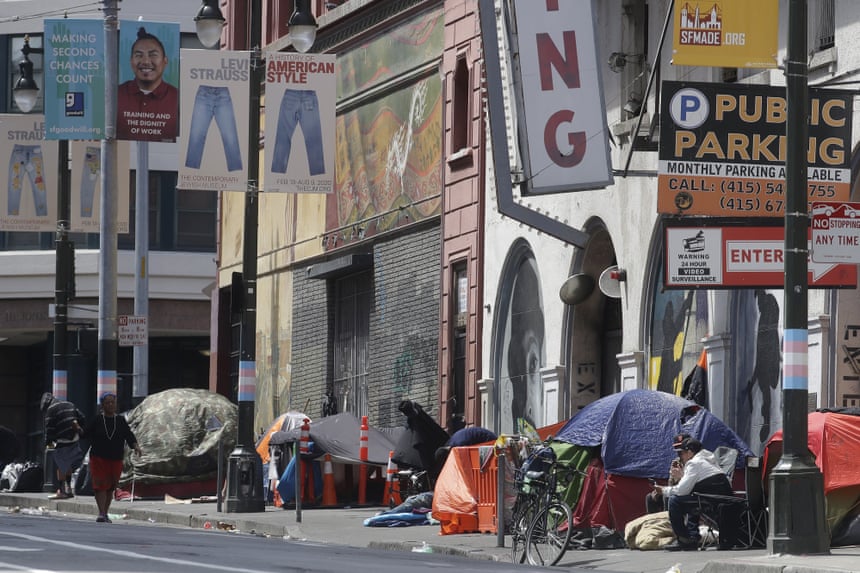

By David M. Greenwald
Executive Editor
San Francisco, CA – Voters, frustrated at the direction taken in San Francisco, tossed out the reform-minded Chesa Boudin and Mayor London Breed installed Brooke Jenkins with clear direction to take on drug issues.
The main problem with the war on drugs—it doesn’t work. There is a simple reason for that—as long as there is demand for drugs, someone who is economically desperate will seek a way to make a quick buck. Supply changes will not impact demand. So long as the underlying causes for drug use—poverty, trauma, untreated mental illness and perhaps inequality itself—are not addressed, disrupting supply lines does not change the underlying issue.
The supply-reduction approach to the drug problem has a long and fairly distinguished history of failure in this country. But worse than that, the policy disproportionately hammers the Black and brown populations as well as already disadvantaged neighborhoods.
During the war on drugs, the Black incarceration percentage went from 38 percent in 1970 to 53 percent by 1995—even though Blacks make up just 12 percent of the overall population. A huge driver for that was the war on drugs.
In 1975, the ratio of Black to white arrest rates for drug-related charges was 2 to 1. By 1990 it was 5 to 1. Now it is 6 to 1. Remember this despite the fact that the actual rate of drug usage and drug sales is lower for Blacks than whites. It is Blacks, due to enforcement patterns by the police, who bear the brunt of that enforcement.
San Francisco already has a huge disparity in the incarceration rate of Blacks to whites. Blacks make up just 6 percent of the San Francisco population, but recent stats put their share in the jails at around 55 percent. That was before the proposal by the mayor and the new DA to crack down on drug usage.
Chief Bill Scott this week at the San Francisco Police Commission meeting, according to a story in the San Francisco Chronicle, said he “had been directed to crack down on drug use in the city’s Tenderloin neighborhood in an effort to combat open-air drug use and dealing in the beleaguered neighborhood. The directive marked a shift in the department’s historic approach to dealing with drug users who might possess paraphernalia or small amounts of drugs not intended for resale.”
The article noted, “A federal grant that allowed police to beef up staffing and overtime this month had enabled officers to ‘engage’ with visible drug users, Scott said.”
The Chronicle notes that this has produced an immediate impact—police have issued “tickets or made arrests in 129 cases involving a stand-alone allegation of possessing drug paraphernalia, compared with 89 issued through all of 2021 and the first six months of 2022 combined.”
Notice what impact they don’t say it has made—a reduction of drug use.
Later the Chronicle adds that “while the details of her specific drug policies have yet to be made public, Jenkins’ first directive signaled an overhaul of the day-to-day operations seen under Boudin: Prosecutors have been instructed to compile a list of pending plea offers on drug charges, with the intent to revoke some of the agreements extended but not yet accepted.”
There are concerns of course that this signals “a return to tough-on-crime strategies that helped explode prison populations and did little to curb the drug epidemic.”
However, both Jenkins and Scott “have said they do not want to open a new front in the war on drugs, but said more needs to be done to combat the rampant dealing and usage in San Francisco’s streets.”
The problem is enforcement is not effective. Enforcement goes after the visible drug users and areas like the Tenderloin, where poor people who are living on the streets are using drugs. What it doesn’t do is go after the people who are using drugs who are living in housing. And yet as we know, the percentage of whites using drugs is actually higher than for people of color, and yet the enforcement falls on the poor and those who are of color.
There is of course another solution, which will probably work a lot better. Treat addiction as a public health rather than a law enforcement issue. Provide adequate mental health services so that people do not rely on illegal drugs to self-medicate.
Provide people with job training, education and housing so that they are no longer forced to live on the streets and fight for subsistence.
Are these options expensive? Of course. But the cost to incarcerate one person for one year in county jail runs upwards of $60,000 and to incarcerate them in a prison is over $100,000. The cost of police enforcement is expensive as well.
As long as we are going to spend a lot of money, why not put that money to where we get a lot of bang for the buck, rather than cycling people through the local prisons and jails attempting to curtail something that will not be curtailed through enforcement efforts?

